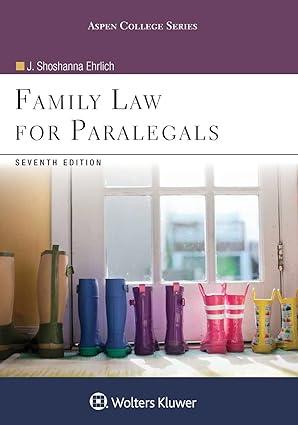In this dispute over occupancy rights to a rent-controlled apartment, the central question to be resolved on
Question:
In this dispute over occupancy rights to a rent-controlled apartment, the central question to be resolved on this request for preliminary injunctive relief . . . is whether appellant has demonstrated a likelihood of success on the merits . . by showing that, as a matter of law, he is entitled to seek protection from eviction under New York City Rent and Eviction Regulations 9 NYCRR 2204.6(d). . . . That regulation provides that upon the death of a rent-control tenant, the landlord may not dispossess "either the surviving spouse of the deceased tenant or some other member of the deceased tenant's family who has been living with the tenant" (emphasis supplied). Resolution of this question requires this court to determine the meaning of the term "family" as it is used in this context. Appellant, Miguel Braschi, was living with Leslie Blanchard in a rent controlled apartment located at 405 East 54th Street from the summer of 1975 until Blanchard's death in September of 1986. In November of 1986, respondent, Stahl Associates Company, the owner of the apartment building, served a notice to cure on appellant contending that he was a mere licensee with no right to occupy the apartment since only Blanchard was the tenant of record. In December of 1986 respondent served appellant with a notice to terminate informing appellant that he had one month to vacate the apartment and that, if the apartment was not vacated, respondent would commence summary proceedings to evict him. The determination as to whether an individual is entitled to noneviction protection should be based upon an objective examination of the relationship of the parties. In making this assessment, the lower courts of this State have looked to a number of factors, including the exclusivity and longevity of the relationship, the level of emotional and financial commitment, the manner in which the parties have conducted their everyday lives and held themselves out to society, and the reliance placed upon one another for daily family services.... These factors are most helpful, although it should be emphasized that the presence or absence of one or more of them is not dispositive since it is the totality of the relationship as evidenced by the dedication, caring and self-sacrifice of the parties which should, in the final analysis, control. Appellant's situation provides an example of how the rule should be applied.....
Questions:
1. What regulation was involved in this decision? What rights did it grant and to whom?
2. How did the defendant think the term "family," as used in the ordinance, should be defined?
3. Why did the court reject the defendant's argument? What meaning does the court give to the term "family"? Why, according to the court, is its meaning consistent with the purpose of the legislation?
4. In general, what factors are relevant in determining if a couple qualifies as a "family"? What factors did the court focus on in deciding that the plaintiff and his partner qualified as a family?
5. Although significant in its approach, why is this decision of limited applicability?
Step by Step Answer:






